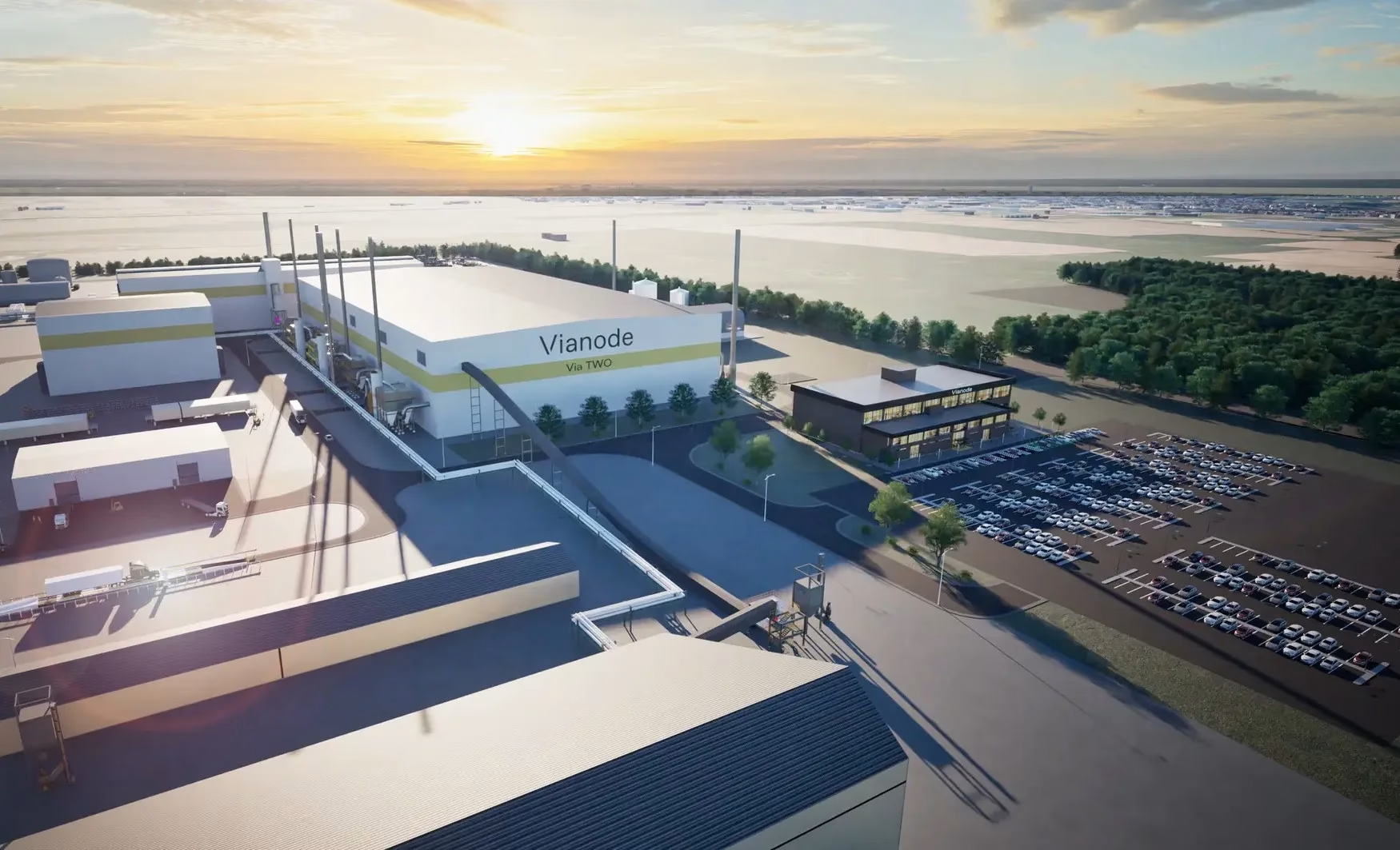Vianode, a Norwegian advanced battery materials company, is investing $3.2 billion to build a synthetic graphite factory in St. Thomas, Ontario. The facility, called Via TWO, represents Vianode’s first large-scale production plant in North America. It will help supply the growing demand for graphite in electric vehicle (EV) batteries, energy storage, and other critical industries.
Economic Impact & Job Creation
The first phase of the plant is expected to create around 300 skilled jobs, with eventual growth to 1,000 workers when fully scaled. The Ontario government is supporting the project with a loan of up to CAD $670 million. Vianode’s CEO, Burkhard Straube, highlighted that this investment underscores Ontario’s strength in clean tech and manufacturing. For the City of St. Thomas, the project is a major generational opportunity, bringing home high-paying jobs and sustainable industry.
Project Factsheet
Company: Vianode (Norwegian battery materials firm)
Plant Name: Via TWO
Location: Yarmouth Yards, St. Thomas, Ontario
Investment: CAD $3.2 billion
Government Support: Up to CAD $670 million loan from Ontario
Jobs: around 300 initially; up to 1,000 at full capacity
Production Start: Expected in 2028
Annual Capacity (future): Up to 150,000 tonnes synthetic graphite
Emissions Profile: Vianode’s technology claims up to 90% lower CO₂ emissions vs conventional graphite
Why St. Thomas Was Chosen
Vianode picked St. Thomas after a detailed North American site selection process, citing several key advantages. The city offers a low-carbon electricity grid, which supports Vianode’s sustainability goals. It is also strategically located near manufacturing hubs, including a major EV battery plant being built by PowerCo (Volkswagen’s battery unit). According to Vianode, St. Thomas has a skilled workforce that’s ready to scale for advanced manufacturing.
Strategic Importance for Canada & G7 Supply Chains
This plant is more than just a local factory, it plays into a larger global strategy for battery and critical mineral supply chains. Vianode’s investment aligns with Canada’s ambitions under the G7 Critical Minerals Production Alliance to build resilient, secure materials capacity. Synthetic graphite is critical not just for EVs; it’s also used in semiconductors, grid storage, nuclear tech, and defense systems. By localizing this production, Canada reduces reliance on imports, especially away from dominant graphite producers abroad.

The Broader Energy & EV Context in Ontario
St. Thomas is fast becoming a clean-tech manufacturing hub. Just nearby, Volkswagen’s PowerCo is building a major EV battery plant. That means Vianode’s graphite production will directly feed into future EV battery factories. It’s part of Ontario’s push to own more of the EV supply chain, from raw materials to finished batteries. Government leaders argue that this dual push for minerals capacity and EV manufacturing will make the province more resilient to geopolitical supply shocks.
What’s Next
Ground-preparation work has officially started in Yarmouth Yards. Vianode plans to move into phased build-out in the coming months, with production expected by 2028. Over time, the facility will to scale capacity massively to help supply graphite for millions of EVs. The investment is also expected to draw further clean-tech and critical minerals players to southwestern Ontario, cementing its role in Canada’s future economy.

